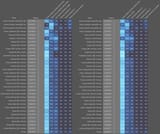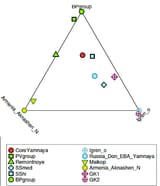Anonymous
7/1/2025, 8:24:43 AM No.17805553
1/?
I believe you know "eurogenes", he recently used my comment and I would like to share it here.
We need to define what "Yamnaya" actually means. Basically, we're talking about burials that date back to 3200 to 2600 BCE, with a specific position of the body and burial mounds. These complexes are linked to a group of people who had a very similar genetic makeup, even though they were spread over a huge area. Almost all of the men in this group belonged to the Y-haplogroup R1b-M269-Z2103.
Now, many people think that the Yamnaya are the "Proto-Indo-Europeans", but that's not exactly true. They may have contributed to several languages and populations that emerged later, such as the Tocharians, the Armenians, and some languages of the ancient Balkans. But to be honest, linguistics is not the focus here. Let's just understand who these guys were.
I believe you know "eurogenes", he recently used my comment and I would like to share it here.
We need to define what "Yamnaya" actually means. Basically, we're talking about burials that date back to 3200 to 2600 BCE, with a specific position of the body and burial mounds. These complexes are linked to a group of people who had a very similar genetic makeup, even though they were spread over a huge area. Almost all of the men in this group belonged to the Y-haplogroup R1b-M269-Z2103.
Now, many people think that the Yamnaya are the "Proto-Indo-Europeans", but that's not exactly true. They may have contributed to several languages and populations that emerged later, such as the Tocharians, the Armenians, and some languages of the ancient Balkans. But to be honest, linguistics is not the focus here. Let's just understand who these guys were.
Replies:



